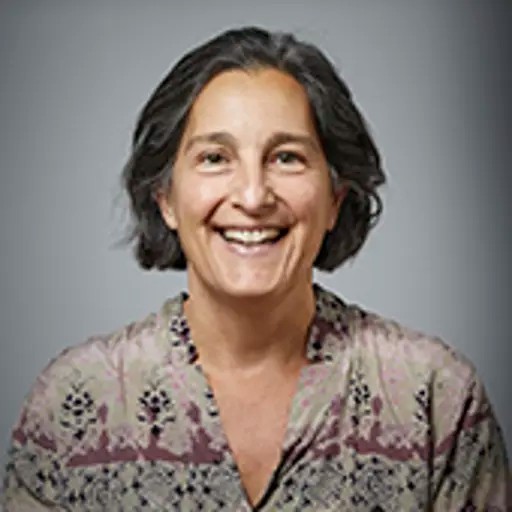Course syllabus adopted 2023-02-13 by Head of Programme (or corresponding).
Overview
- Swedish nameCell- och vävnadsinteraktion med biomaterial
- CodeTIF125
- Credits7.5 Credits
- OwnerMPBIO
- Education cycleSecond-cycle
- Main field of studyBioengineering
- DepartmentPHYSICS
- GradingTH - Pass with distinction (5), Pass with credit (4), Pass (3), Fail
Course round 1
- Teaching language English
- Application code 08129
- Maximum participants30 (at least 10% of the seats are reserved for exchange students)
- Block schedule
- Open for exchange studentsYes
Credit distribution
Module | Sp1 | Sp2 | Sp3 | Sp4 | Summer | Not Sp | Examination dates |
|---|---|---|---|---|---|---|---|
| 0107 Examination 7.5 c Grading: TH | 7.5 c |
|
In programmes
- MPBIO - BIOTECHNOLOGY, MSC PROGR, Year 1 (compulsory elective)
- MPBME - BIOMEDICAL ENGINEERING, MSC PROGR, Year 2 (elective)
- MPMED - BIOMEDICAL ENGINEERING, MSC PROGR, Year 1 (elective)
Examiner
 Julie Gold
Julie Gold- Professor, Nano and Biophysics, Physics
Eligibility
General entry requirements for Master's level (second cycle)Applicants enrolled in a programme at Chalmers where the course is included in the study programme are exempted from fulfilling the requirements above.
Specific entry requirements
English 6 (or by other approved means with the equivalent proficiency level)Applicants enrolled in a programme at Chalmers where the course is included in the study programme are exempted from fulfilling the requirements above.
Course specific prerequisites
Introductory course in cell and/or molecular biology.Aim
The aim of this course is for students to learn the mechanisms by which the human body reacts to a foreign material being in contact with, or implanted into, living tissues. The goal is to understand normal wound healing in the absence of a foreign material, and then how the presence of a material might influence the outcome of the wound healing response. An understanding of tissue reactions to biomaterials is necessary in order to design new materials, surface treatments or strategies for repairing, replacing or regenerating tissues and organs.Learning outcomes (after completion of the course the student should be able to)
The overriding learning outcomes for the course are: Correctly define and articulate the concept of biocompatibility and how to determine it
Differentiate between scenarios of wound healing with and without a foreign material
Argue a case on biocompatibility testing and regulatory aspects of biomaterials and medical devices
Critically evaluate and discuss with peers scientific publications in the biomaterials field, specifically from research journals
More detailed learning outcomes include:
- Describe the key components of the tissue-material interface.
- Describe key properties of surfaces, proteins and biological fluids that influence the nature of protein adsorption to surfaces.
- Describe the major components of tissue, and how cells interact with their microenvironments, both in vivo and in vitro.
- Describe main issues in blood-material interactions, including platelet activation, fibrin clot formation, and mechanisms to control blood coagulation processes.
- Define main symptoms of, and key cell types involved in the inflammatory response.
- Describe the connections between blood coagulation and inflammatory processes.
- Discuss the significance of biomaterials related infections, which bacteria are involved, and approaches to treat and prevent their occurance.
- Describe the innate versus the acquired immune systems, including key cell types and molecular events involved in each.
- Describe the Classical versus the Alternative pathways of complement activation, and the links between the inflammatory process and the complement system.
- Describe complement-mediated reactions to biomaterials and how they are regulated and can be controlled.
- Compare the phases of normal wound healing of tissues with those of wound healing around implant materials.
- Describe the events leading to fibrous capsule formation around implants and the key parameters influencing its formation.
- Be familiar with the regulatory guidelines for marketing medical devices and recommended tests to evaluate biocompatibility of devices and their materials.
Content
The course investigates interactions between the human body and implant biomaterials and devices. Focus is on the tissue-material interface, from molecular level events to selected biological and physiological consequences of these events. All implantation of materials into the body creates a wound, and the wound healing process occuring around the implant is key in determining the bodies reaction to the foreign material. Understanding how we can influence cellular responses to materials by engineering the biomaterial surfaces is an important goal for the development of improved medical devices as well as tissue engineered products. Host reactions to biomaterials will be covered. These include protein-surface interactions, cell-surface interactions, blood-material interactions, blood coagulation, inflammatory response, infection, immune response, complement activation, and the overall stages and processes of wound healing. The concept of biocompatibility and methods for biological testing of biomaterials will also be covered.
Organisation
The course is organized into lectures, article review sessions, a mock trial, and a site visit to a medical device company, medical clinic or biomaterials research laboratory.
Literature
Textbook for the course: Biomaterials Science. An Introduction to Materials in Medicine (Ed. WR Wagner et al), Academic Press, 4th Edition, 2020 - ebook Chalmers Library.- An Introduction to Tissue-Biomaterial Interactions, KC Dee, DA Puleo, R Bizios, Wiley-Liss, 2002.
- Biomaterials: The Intersection of Biology and Materials Science, J.S. Temenoff, A.G. Mikos, Pearson Prentice Hall, 2008
- Handouts in the form of lecture notes and scientific journal articles.
Examination including compulsory elements
Written final exam, quiz, written and oral article reviews/sessions, demonstrated knowledge and understanding at mock trial. Active participation is required during the mock trial and preparation for the mock trial.The course examiner may assess individual students in other ways than what is stated above if there are special reasons for doing so, for example if a student has a decision from Chalmers about disability study support.